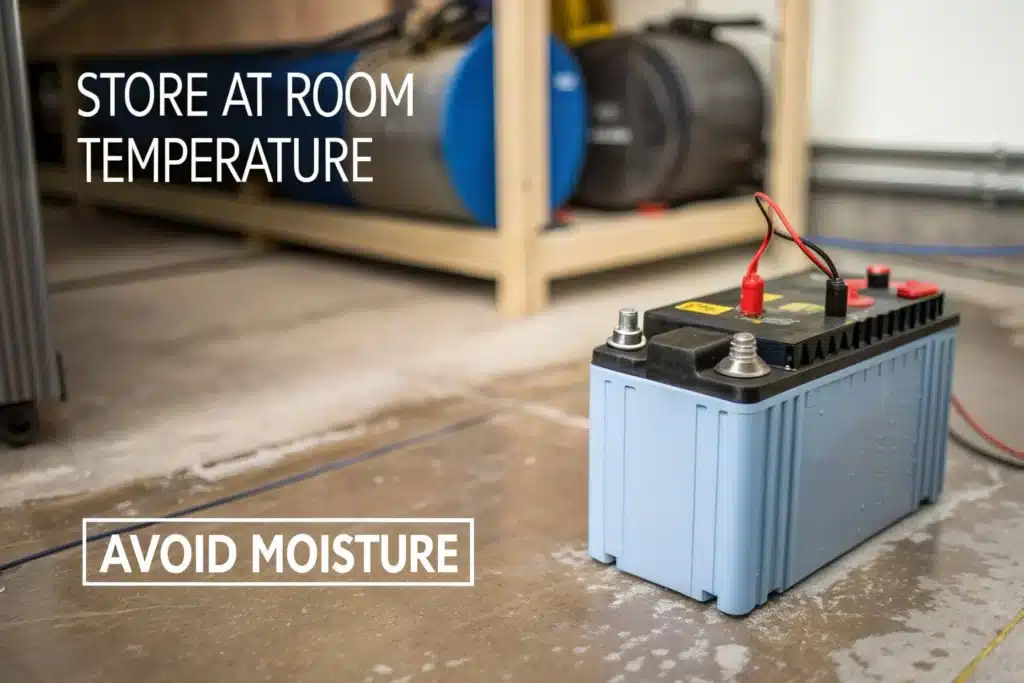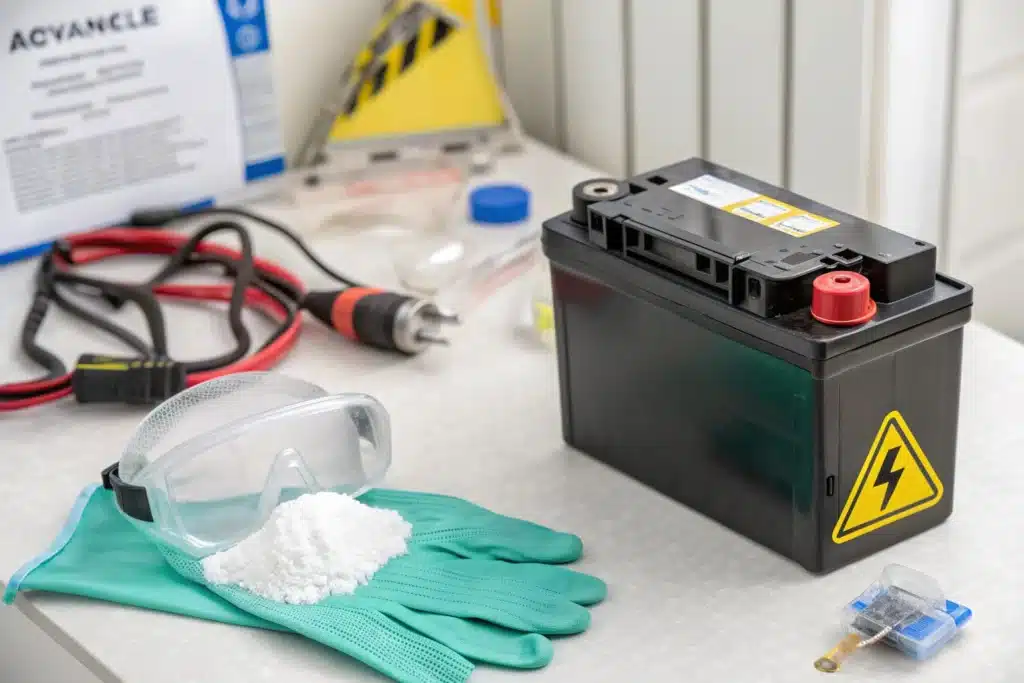Lithium batteries are very common in our daily lives. They are used by almost everyone in mobile phones, computers, power banks, etc. We often hear about, or even see with our own eyes, batteries bulging, heating up, leaking, or in a few more alarming cases, posing a risk of fire. But what exactly does leakage mean?
The purpose of this article is to analyze the root causes behind these phenomena in an easy-to-understand manner and provide you with a set of clear and practical prevention methods to help you use your lithium battery devices safely and confidently and spend every day with peace of mind.
Table of Contents
ToggleWhy do lithium batteries leak

Below we analyze several common reasons that cause lithium batteries to leak, heat up, or even more serious problems:
Overcharging. If the charging voltage exceeds its rated upper limit, the chemical reaction inside the battery will lose balance, producing excessive gas, causing the internal pressure to rise sharply. This can cause battery bulging at the least, or even cause the shell to rupture, exhaust, or even trigger dangerous thermal runaway.
Overdischarge. Discharging a battery completely or even continuing to discharge it will also damage the battery. This will destroy the positive and negative electrode material structure inside the battery, causing a permanent decrease in capacity. Worse, an overdischarged battery will increase the risk of internal short circuits the next time it is charged.
Physical damage. If a phone is accidentally dropped, the battery is squeezed, or it is accidentally pierced by a sharp object, these physical damages can directly destroy the integrity of the battery’s internal structure, especially the diaphragm that separates the positive and negative electrodes. Once the diaphragm is damaged, the positive and negative electrodes come into direct contact, which will cause an internal short circuit, instantly generating a large amount of heat and gas, and the consequences may be very serious.
High temperature environment. High temperature acts like a catalyst, accelerating all chemical reactions in the battery (including side reactions), which increases the internal pressure of the battery, accelerates battery aging, and reduces the ignition point of battery materials, thus significantly increasing the risk of thermal runaway.
Internal short circuit. In addition to short circuits caused by physical damage, there may also be problems with the battery itself. For example, tiny metal impurities are mixed in during the production process, or as the battery ages, needle-like lithium dendrites may grow inside and pierce the separator. These may cause the positive and negative electrodes inside the battery to contact without external force, forming a short circuit.
Battery aging. Lithium batteries age, just like us. As the number of charge and discharge cycles increases, the battery capacity gradually decreases, the internal resistance increases, and the overall chemical stability decreases. Although normal aging is usually a slow process, the likelihood of abnormal phenomena such as bulging increases at the end of the battery life.
Using mismatched/poor quality chargers. These chargers may not provide stable and accurate voltage and current, or lack the necessary protection mechanisms, which can easily lead to overcharging, undercharging or other forms of damage, indirectly causing battery problems.
How to effectively prevent lithium battery leakage

Only when you know the reasons behind it will you truly pay attention to the preventive suggestions we give later.
Correct charging is the first step. Always use original or officially certified/reputable third-party brand chargers and data cables. They can provide the most stable voltage and current for your device and have the necessary safety protection mechanisms. Lithium batteries have no memory effect, so try to choose shallow charging and shallow discharge (for example, cycle between 20%-80% of the power).
Stay away from extreme temperatures. Avoid exposing devices with lithium batteries to high temperatures for a long time, and do not charge the device in an environment where the temperature is too high (for example, over 35°C) or too low (for example, below 0°C).
Handle with care to avoid physical damage. Use a suitable protective case or cover for your mobile phone, laptop and other precision devices. You are strictly prohibited from attempting to disassemble, puncture, bend, throw into fire or hit the battery with heavy objects.
Check regularly and pay attention to abnormal signals. Check the battery for bulging and leakage. If you find that the battery life suddenly and abnormally decreases significantly, it may also be a sign of internal battery aging or problems.
Replace aged or damaged batteries promptly. Lithium batteries are consumables, and their capacity and performance will naturally decay as the number of charge and discharge cycles increases. When a battery is obviously aged (such as a sharp decrease in battery life, frequent abnormal heating, or slight swelling), do not continue to use it and replace it with a new battery in a timely manner.
For long-term storage, the best practice is to charge/discharge the battery to around 40%-60% for storage.
What to do if lithium battery leaks

Despite our best efforts, sometimes a battery may show signs of concern, such as swelling, leakage, or unusual heating. In these cases, safety is the absolute top priority.
Safety first: Stop using and disconnect immediately. Stop using the device as soon as you notice any obvious abnormalities.
Avoid direct skin contact with swollen, leaking or obviously damaged batteries. Wear protective gloves as much as possible during operation.
Move the offending device or battery to a safe, stable, non-flammable surface away from anything flammable.
Never, under any circumstances, attempt to charge a swollen, damaged, leaking or overheated battery. Attempting to charge a damaged battery is extremely dangerous and significantly increases the risk of fire or explosion.
Conclusion
We have explored the inherent reasons why lithium batteries may have problems under certain conditions – from overheating, physical damage to internal short circuits and natural aging. More importantly, we have mastered a series of effective key strategies to “nip problems in the bud”: charge correctly, stay away from extreme temperatures, handle with care to avoid damage, check for abnormal signals regularly and replace aging batteries in a timely manner. At the same time, we have also made it clear how to deal with it safely and calmly when the battery does have an abnormality.
